Mastering iPhone Screen Photography: A Detailed Manual
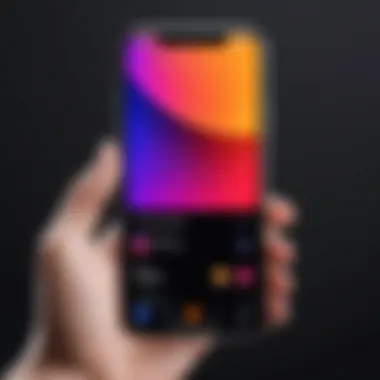
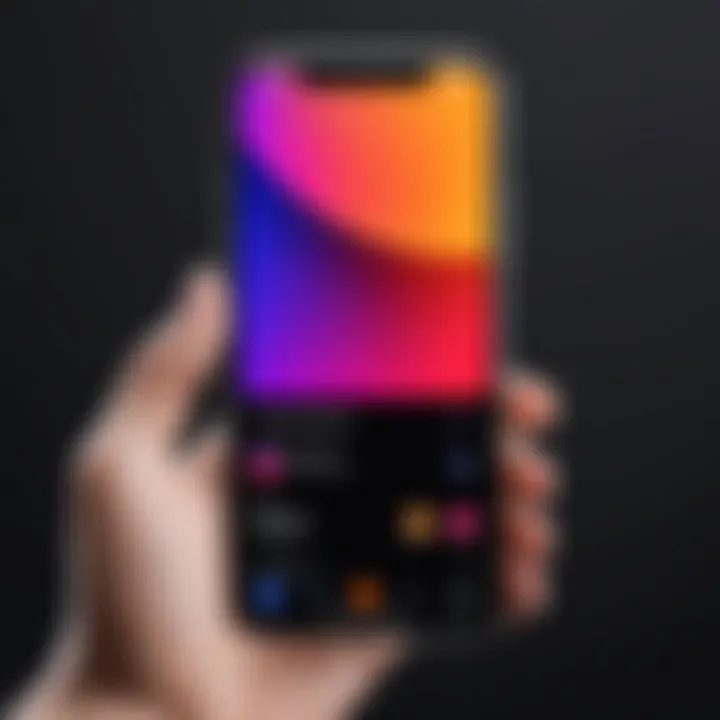
Intro
In the world of digital communication, capturing and sharing moments with your smartphone has become second nature. For iPhone users, the ability to take crisp and clear screen pictures, or screenshots as they are commonly referred to, adds a powerful layer to personal expression and information sharing. This guide looks into effectively maximizing your screen capture skills on an iPhone, offering detailed insights into the functionality and tools available.
Few can argue that the iPhone is widely regarded for its intuitive interface and robust performance when it comes to photography, including capturing screens. Whether you're saving a memorable conversation, documenting your gaming triumphs, or preserving online research for future reference, understanding the nuances of this feature enhances the user experience exponentially. Let's dive deeper into how to elevate your screen photography game.
Prologue to Screen Pictures
In an age where visual communication reigns supreme, understanding the art of capturing screen pictures on an iPhone becomes an invaluable skill. This section aims to shine a light on what screen pictures are and why they matter significantly in daily interactions, be it personal or professional.
Screen pictures, or screenshots as most folks call them, might seem like a basic feature, but they pack a punch when it comes to convenience. They allow users to preserve moments that might otherwise slip through the cracks—be it a funny meme, an important message, or an online recipe that’s just too good to forget. With just a couple of taps, you can hold onto glimpses of digital experiences that you may want to revisit later.
Benefits of Screen Pictures
Utilizing screen pictures enhances communication and collaboration in various ways. Here's a few notable aspects:
- Quick Sharing: Sending a screen picture is often faster than typing everything out. Want to share a meme? Just snap a screenshot and send it.
- Clarity: Sometimes words don’t cut it; a visual representation can bridge that gap. If you need to explain a tricky setting in an app, a screenshot says a thousand words.
- Record Keeping: It’s a handy way to keep track of important information, like confirmation messages or appointment details, without having to dig through tons of messages or emails.
Considerations for Capturing Screen Pictures
With great power comes great responsibility. While it’s tempting to capture everything and anything on your screen, there are important considerations. Privacy is a biggie; capturing sensitive information without permission can cause unwanted troubles. Additionally, using screen captures judiciously can prevent cluttering your photo library, making it easier to find what you need later.
Tip: Always double-check the content you're capturing to ensure you're respectful of others' privacy.
In this comprehensive guide, we will dive deeper into the steps for capturing screen pictures effectively, editing them for clarity, and navigating the plethora of sharing options available. By honing these skills, you’ll become adept at maximizing the potential of screen pictures on your iPhone, enriching not just your own digital interactions, but possibly those of others as well.
Understanding the Importance of Screen Pictures
When you think of your iPhone, you probably envision a sleek device that serves multiple purposes. Among these, the ability to capture screen pictures holds significant weight. This feature is not just a utility; it’s a gateway to a video game of possibilities—be it for personal reminiscing or professional documentation. The importance of mastering screen captures can’t be overstated, as they empower users to communicate visually in a world where images often speak louder than words.
There are numerous reasons why understanding this capability is vital. First, it enhances personal expression. Imagine you're scrolling through social media, and you come across a post that ignites a spark of inspiration. Instead of just liking it, capturing that moment lets you save and refer back to it later. You can gather threads of inspiration and curate your own visual diary right from your phone.
For businesses, the stakes are even higher. Visual communication has become a cornerstone in marketing and branding strategies. For instance, if you are conducting a presentation, a well-curated screen picture can succinctly convey your message. Rather than complex descriptions that may leave your audience scratching their heads, a picture can crystallize your point effectively. It's the difference between saying you have a robust product and showing it in action—actions indeed speak louder than words.
Moreover, there are practical considerations too. Screen captures can serve as a means of documenting processes or errors to share with tech support. Let’s say your favorite app crashed—the ability to document what was on your screen at that precise moment provides context that text alone cannot convey. This kind of clarity improves communication and aids in quicker problem-solving.
"In an era leaning increasingly towards visual content, the proficiency to capture screen images is becoming less of a skill and more of a necessity."
In sum, understanding the importance of screen pictures isn’t just about functionality. It’s about enhancing communication, driving creativity, and adapting to a world where visual storytelling reigns supreme.
Everyday Use Cases
- Memorable Moments: Have you ever wanted to immortalize a conversation with a friend? Capturing a chat where you shared jokes or life updates can serve as a pleasant reminder of those moments.
- Recipe Collections: In a day where cooking shows and online recipes abound, documenting those scrolling moments of culinary masterpieces lets you create a personalized cookbook without the hassle of bookmarking pages.
- Travel Highlights: When planning a trip, gathering screenshots of travel itineraries or hotel details makes it easy to organize all vital information in one visual space.
These everyday scenarios highlight how versatile and necessary screen pictures can be in enhancing your daily digital interactions.
Professional Applications
- Project Management: For professionals working on collaborative projects, screen pictures act as straightforward reminders or guides. Capturing a snapshot of a project timeline or task assignment can reinforce accountability.
- Customer Interactions: If you work in customer service, using screen captures to document interactions with clients can support your claims or feedback. It provides a tangible reference that can resolve disputes or gather insights for improvement.
- Training and Tutorials: Educators and trainers often leverage the capability of screen captures to provide instructional content. A step-by-step visual guide can significantly enhance the learning experience compared to text alone.
These professional use cases underscore the essential role that screen pictures play in fostering efficient communication and productivity in the workplace.
How to Capture a Screen Picture on iPhone
Grasping how to capture a screen picture on your iPhone is fundamental for maximizing your experience with this versatile device. In a world where visual communication reigns supreme, screen pictures serve as the lingua franca of digital interactions. Whether you're sending a funny meme to a friend or documenting an important piece of information for work, knowing the right techniques can make the difference between a simple task and a hassle.
Being adept at capturing screen pictures on an iPhone not only saves time but also enhances your ability to share experiences and information swiftly and effectively. For tech-savvy individuals, this skill is just another feather in the cap – a way to showcase your expertise with gadgets and technology. To better understand the nuances involved, let's break down the methods.
Standard Capture Methods
Capturing a screen picture on an iPhone is as easy as pie once you get the hang of it. Apple has streamlined the process, ensuring that even the most technologically challenged among us can manage it with a bit of practice. Here are the standard methods:
- Side Button + Volume Up:
- Assistive Touch Method:
- With your iPhone screen displaying what you want to capture, just press the Side button and the Volume Up button simultaneously.
- The screen will flash briefly, and you'll hear a camera shutter sound, indicating that the capture was successful.
- The screenshot will automatically save to your Photos app for later use.
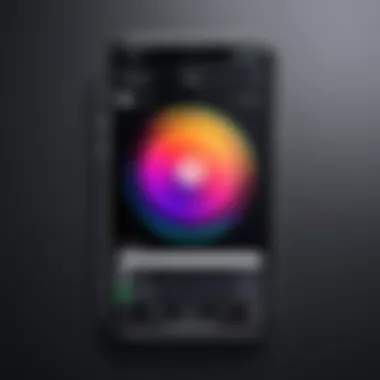
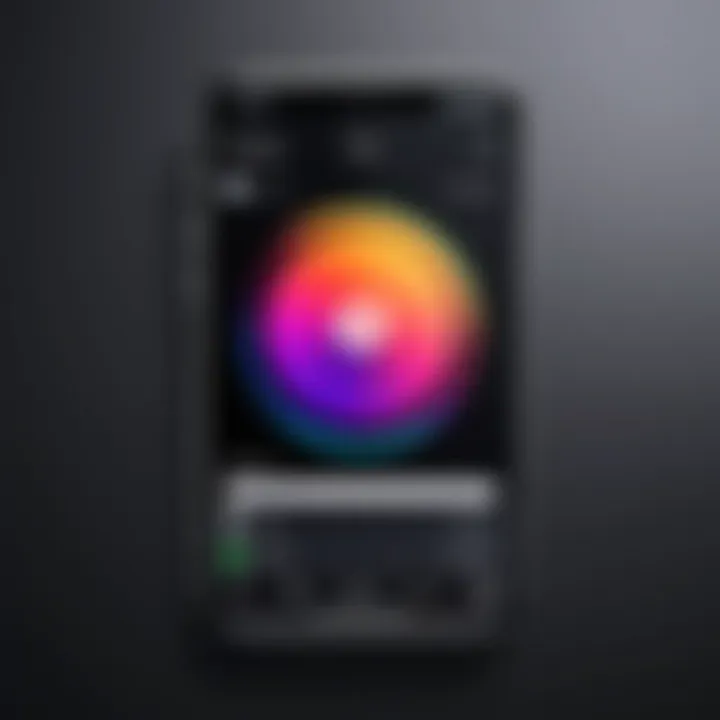
- If you prefer a software method, enabling Assistive Touch offers a touch-friendly way to capture screens.
- You can customize the menu to include a screenshot option, making it just a tap away.
These methods are the bread and butter of screen capturing on iPhones, ensuring that you can easily document anything from important messages to game scores.
Using Assistive Touch for Accessibility
For those who find traditional button presses challenging, using Assistive Touch is a game-changer. This built-in feature caters to various users, providing an interface that simplifies many actions, including taking screen pictures. Here’s how to get the ball rolling:
- Enable Assistive Touch: Go to > > > , and toggle it on.
- Customize Your Menu: Once on, you can adjust the menu by selecting and add the 'Screenshot' option.
- Capture with a Tap: Now, whenever you need a screenshot, just tap the Assistive Touch icon on your screen, and select 'Screenshot.'
This method not only makes capturing screen pictures more user-friendly but also opens up the iPhone's capabilities to a wider audience, making technology accessible to everyone.
Remember: Whatever method you choose, always check your Photos app to ensure the screenshot has saved properly. You wouldn’t want to miss capturing that perfect moment.
Editing Screen Pictures: Tools and Techniques
Capturing a screen picture is only half of the battle; the true mastery lies in editing those images. This section delves into the tools and techniques that empower users to enhance, annotate, and personalize their screen captures, making them not just mere images but dynamic reflections of intent and clarity. Editing allows for personalization, ensuring that the final product conveys the desired message effectively.
Built-in Editing Features
The iPhone comes packed with an array of built-in editing features that simplify the enhancement of screen captures directly within the Photos app. These tools are user-friendly, making them accessible to tech enthusiasts and novices alike.
Cropping and Resizing
Cropping and resizing enable users to focus on what truly matters in a screen picture. Whether it’s honing in on an essential message or eliminating distractions, this feature allows significant control over the final visual outcome. A standout characteristic of cropping is its straightforward approach to removing unwanted parts of an image, making it a popular choice among users. Its unique benefit lies in granting users the ability to tailor their captures to specific dimensions. This tailored adjustment can be particularly advantageous when sharing on platforms with specific format requirements, urging the user to present polished profiles.
However, it’s worth noting that excessive cropping can sometimes lead to a loss of detail or quality if one isn't careful. Striking the right balance while maintaining clarity is key.
Adding Annotations
When words alone don’t cut it, adding annotations can be a game-changer. This feature allows users to overlay text or drawings onto their images, providing context or emphasizing certain elements. The standout aspect of annotations is their power to transform an ordinary image into an informative visual aid, making them increasingly valued in both personal and professional contexts.
Unique to this feature is the ability to choose from various colors and fonts, offering flexibility to match the tone of the message. However, overloading a screen picture with too much annotation can detract from its clarity, so a clean, concise approach is often best. The blend of visual and text can bring clarity or confusion, depending on how it is utilized.
Adjusting Brightness and Contrast
Adjusting brightness and contrast is akin to fine-tuning an instrument; it enhances the overall clarity and mood of the image. This feature permits users to bring depth to their screen pictures. A key characteristic here is the ability to brighten dull images or highlight specific details, which is crucial when presenting visually rich content. Enhancing contrast can make certain features pop, drawing viewer attention to focal points.
These adjustments have great potential—brighter images tend to engage viewers more effectively. However, it’s important to tread lightly with these adjustments; oversaturation can lead to unnatural results. Finding the right level can be the difference between a captivating image and one that feels artificial.
Third-Party Editing Apps
While built-in tools offer a solid foundation, third-party editing apps can take screen picture editing to the next level. These applications often come equipped with advanced features that extend beyond basic editing capabilities. For instance, apps like Adobe Lightroom and Snapseed allow for detailed adjustments not only in brightness and contrast but also apply filters and advanced color corrections.
- Accessibility and Variety: The diverse range of editing apps means users can find precisely what they need, whether they require complex modifications or simple enhancements.
- User Experience: Many of these applications are designed with user experience in mind, providing intuitive interfaces that appeal to both tech aficionados and everyday users.
Nevertheless, it’s critical to choose apps that maintain device performance and don’t compromise image quality. Test a few out to see what works best, as each app brings its own unique palette of features and quirks.
In a realm where visuals reign supreme, mastering the art of editing within the iPhone’s ecosystem offers users the power to transform their screen pictures into expressions of creativity and clarity. These tools not only enhance user experiences but elevate the quality of the communication in a digital landscape where every picture tells a story.
Sharing Screen Pictures Effectively
Sharing screen pictures from your iPhone isn’t just about sending a quick snapshot; it’s a way to communicate and express ideas more vividly. In a digital world where messaging often lacks nuance, a well-crafted screen picture can bridge the gap between words and action. The act of sharing becomes more than a mere transaction; it transforms into a narrative, a visual representation that captures moments, information, and emotions all at once.
Social Media Integration
Social media platforms have become the lifeblood of modern communication, and integrating screen pictures effectively across these platforms amplifies your message. When you capture a screen picture and post it on channels such as Facebook, Twitter, or Instagram, you are essentially creating dynamic content that can engage your followers in unprecedented ways. Here are some important considerations:
- Choosing the Right Format: Different social media platforms have varied ideal image dimensions and formats. For Instagram, for example, you may want a square crop, while Twitter favors landscape. Understanding these preferences helps your content shine.
- Using Captions Strategically: A picture might be worth a thousand words, but a compelling caption can enhance its impact. Consider adding context or posing questions to incite conversations.
- Timing Your Posts: Posting at the right time can significantly expand the reach of your screen picture. Research shows that certain times of day yield higher engagement rates, which can inform when you should hit that share button.
The seamless integration of screen pictures into your social media strategy feeds into a larger narrative about how users interact with visual content. It makes every screenshot you share a potential conversation starter, and in the realm of social media, conversations lead to connections, and connections lead to community.
Email and Messaging Options
In a professional context, the significance of screen pictures cannot be overstated. Whether you’re a freelancer showcasing your work or an employee providing updates, sharing via email or messaging apps offers tailored communication possibilities. Here’s how to make the most out of this feature:
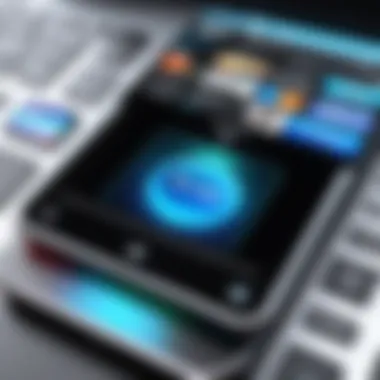
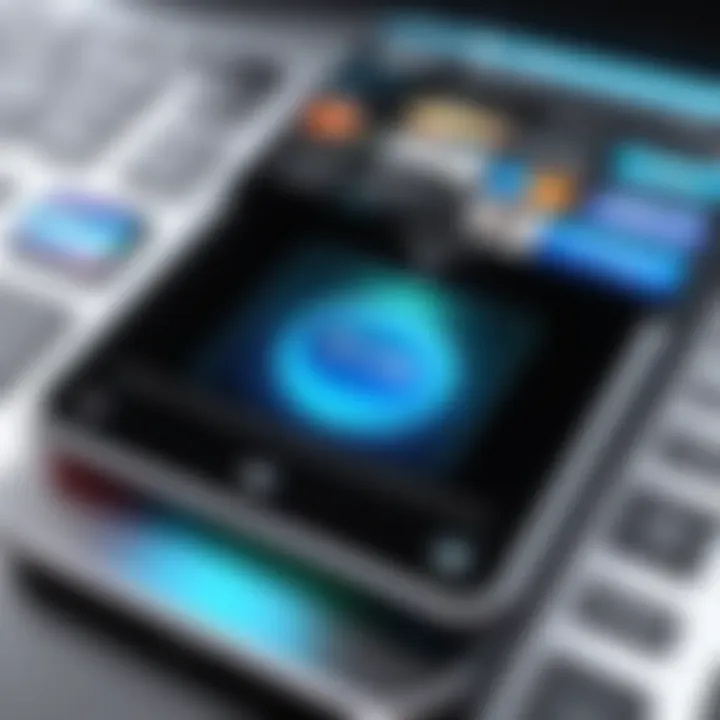
- Attaching with Care: When sending a screen picture via email, consider the file size. Compressing images without losing quality can ensure your emails are sent promptly without clogging inboxes.
- Direct Messaging Applications: Apps like WhatsApp or Telegram offer instant sharing. This immediacy boosts productivity by facilitating quick exchanges of information and ideas. A screen picture showing a graphical representation of data can easily replace lengthy written explanations.
- Using Annotations: Before sharing, using built-in editing tools or third-party apps to annotate the screen picture can provide clarity and context. Highlighting specific areas of interest can lead to more constructive feedback from your recipient.
"A well-chosen screen picture shared at the right moment can change the course of a conversation."
The impact of sharing screen pictures through email and messaging goes beyond mere aesthetics; it's about effective communication tailored to the environment. It transforms the way ideas are exchanged and demonstrates a proactive approach in information sharing.
By understanding the intricacies of sharing screen pictures effectively, you reinforce your digital presence. Embracing these tools not only amplifies your voice but also enhances the way you connect with the world.
Exploring Screen Recording: A Related Feature
When discussing the functionality of capturing images on an iPhone, it’s essential to also consider the complementary feature of screen recording. While taking a screen picture is often used for capturing a single moment on your device, screen recording allows users to capture a sequence of actions, making it invaluable for tutorials, gameplay, and more. This dual capability enhances the way users convey information and share experiences in the digital world.
Differences Between Screen Pictures and Recordings
The differences between screen pictures and recordings boil down to their purpose and output.
- Content Type: A screen picture freezes a moment in time, typically an image representing what is on the screen at that instant. In contrast, screen recording captures everything happening on the screen for an extended period, including movements, sounds, and interactions.
- File Size: Generally, recordings consume more storage space than individual screen pictures due to their duration and the amount of data processed.
- Usage Context: While a screen picture is ideal for sharing snapshots of conversations, events, or notable moments, screen recording is more suitable for demonstrating a process, such as app tutorials or gameplay strategies.
These distinctions highlight the unique applications of each tool and the need for users to choose based on their intent.
How to Record Your Screen on iPhone
Recording the screen on an iPhone is both straightforward and efficient. Here’s how you can easily do it:
- Enable Screen Recording in Settings:
- Start Recording:
- Stop Recording:
- Access Your Recording:
- Navigate to Settings > Control Center.
- Tap on Customize Controls.
- Look for Screen Recording and tap the green plus icon to add it.
- Swipe down from the top right corner of the screen to access the Control Center.
- Tap the Record button (it looks like a solid circle within a ring).
- After a three-second countdown, recording will begin.
- You can stop recording by tapping the red status bar at the top of the screen, then selecting Stop.
- Alternatively, return to the Control Center and tap the Record button again.
- The video will automatically be saved in your Photos app. You can edit it just like any other video!
Remember, if you want to capture sound while recording, ensure the microphone is turned on by long-pressing the Record button and enabling the microphone option.
Mastering screen recording adds significant value to your iPhone skills. It allows you to create content that is not only visual but also auditory, providing a fuller experience for viewers. This knowledge is invaluable whether for personal sharing or professional presentation.
Optimizing Screen Picture Quality
In the ever-evolving arena of mobile photography, optimizing the quality of screen pictures holds a paramount significance, especially for iPhone users. With advances in technology and camera capabilities, merely capturing a screen image isn't where the journey ends. It’s about ensuring these snapshots reflect crisp clarity, vibrant colors, and true-to-life details. Higher quality screen pictures don’t just look better; they command attention and convey a certain professionalism. If you're looking to elevate your digital photography game, understanding how to optimize the quality of these pictures is essential.
Settings to Consider
When it comes to optimizing screen picture quality, certain settings on your iPhone can make a world of a difference. Here are some key elements to keep in mind:
- Resolution Settings: The iPhone usually captures at a high resolution by default, but check your settings to make sure it’s set to the highest available resolution. Lower resolutions can yield pixelated or blurred images.
- Optimize Storage Settings: While high quality is vital, managing your storage is also crucial. Using the "Optimize iPhone Storage" feature stores full-resolution images in iCloud, while keeping lower-resolution copies on the device. This setting ensures you still access live photos whenever needed.
- Accessibility Settings: Sometimes, high contrast settings can enhance clarity for those with vision impairments. Adjusting these settings may also yield improved visuals for screen captures.
- Screen Display Preferences: Utilize the True Tone feature or adjust your display settings to better manage how colors appear on your screen, ensuring that colors are as accurate as possible when captured.
The Impact of Lighting
One cannot overstate the importance of lighting when capturing screen pictures. The light directs the attention of the viewer and can make or break a shot. Here’s how lighting impacts the quality of your captures:
- Natural Light vs. Synthetic Light: Natural light tends to yield the most favorable results. If you're in a well-lit area with ample sunlight, your images are likely to be vibrant and well-defined. Conversely, capturing under harsh artificial lights can cast unwanted shadows or create incorrect color representations.
- Timing is Everything: The time of day can affect not just the quality but also the mood of your screen pictures. The golden hour, the period shortly after sunrise or before sunset, produces softer and warmer light, which can enhance the aesthetic of your capture.
- Reflections and Glare: Be aware of reflective surfaces, as they may introduce glare that distracts from the content of your picture. Adjusting your angle to minimize reflections often yields a clearer image.
"Quality is not an act, it is a habit." - Aristotle
Adjusting for these factors helps create a more optimal environment for screen captures, allowing your images to stand out in a crowded digital world. By fine-tuning both your settings and lighting conditions, you can significantly enhance the quality of your screen pictures on your iPhone.
Legal and Ethical Considerations
When delving into the world of screen pictures on iPhone, it's crucial to shine a light on the legal and ethical dimensions that come along with it. Capturing what’s on your screen brings about not just technical skills but also responsibilities. Considering legal frameworks in copyright and privacy is essential to navigate this digital photography landscape. Without awareness of these issues, users might find themselves in murky waters, facing unintended consequences.
Copyright Issues
The matter of copyright looms large in the realm of screen capturing. Generally, any content that you can capture from your screen – be it a video, a website, or even an image from a photo gallery – likely falls under some kind of copyright protection. For example, if you take a screenshot of a movie scene or a piece of artwork, the original creator retains rights to that content. Using such images without appropriate permissions could open the door to legal challenges.
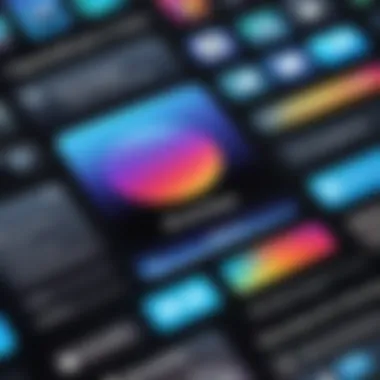
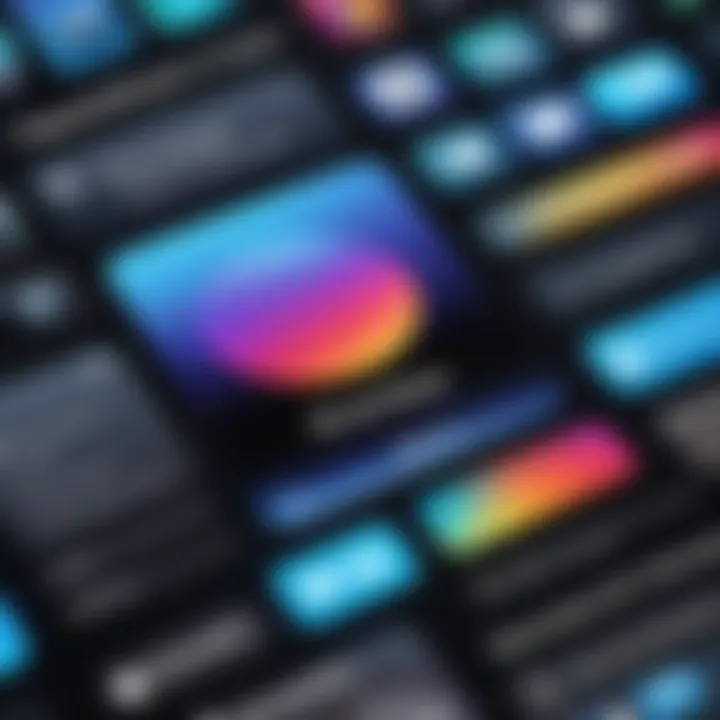
Key points to remember:
- Always consider if the content is copyrighted before capturing.
- If sharing, give appropriate credit to creators whenever possible.
- Be particularly cautious with creative works like music videos, images, and text-heavy content.
Users must weigh the risks and benefits of their actions. Many times, it might be safer to create original content rather than risk an infringement claim. Legal disclaimers can serve as a guiding light, helping one remain on the right side of the law.
"Not all that glitters is gold; not all screen captures are free for the taking."
Privacy Concerns
Privacy, on the other hand, shifts the focus from copyright to the sensitive data that can be exposed through screen captures. Whether you are capturing a personal chat or sensitive information displayed on a screen, you must ask yourself, "Am I violating someone’s privacy?" This question becomes paramount in today’s online interactions.
What to consider when it comes to privacy:
- Ensure that sensitive information of individuals – names, contact details, or personal conversations – is not included in your captures.
- When sharing screen pictures, obtain consent if it involves other people's data.
- Be aware that even benign screenshots can carry implications that might not be apparent at first glance.
As society becomes increasingly aware of privacy rights, individuals are encouraged to tread carefully with how they handle screen captures. Protecting privacy isn’t just a legal obligation; it’s an ethical duty that cultivates trust and respect in digital interactions.
Troubleshooting Common Issues
Understanding how to effectively troubleshoot common issues related to screen capturing on the iPhone is crucial. Despite the user-friendly nature of iOS, problems can still crop up that hinder the screen capture process. Whether you’re trying to document an important conversation or save a funny meme, confronting these challenges can be frustrating. This section addresses the significance of recognizing and resolving potential problems, ensuring you maximize your screen capturing experience. The benefits are twofold: firstly, by troubleshooting issues, you improve your technical know-how; secondly, you prevent the loss of valuable information.
Screen Capture Not Working
Many users may find themselves scratching their heads when the screen capture feature seems to malfunction. The reasons can be varied and often simple to address. Here are some steps to consider:
- Check the Settings: Sometimes, changing settings unknowingly can cause the feature to stop working. Double-check that screen capture isn’t disabled in your settings.
- Restart Your Device: A classic fix, turning your iPhone off and on again can resolve many issues. This refresh often restores functionalities.
- Update iOS: Ensure that your iPhone is running the latest version of iOS. Outdated software can lead to glitches.
- Free Up Space: If your storage is nearly full, capturing screens may not work. Clear out some space to remedy this.
If you’ve tried all of these steps and still face hurdles, it may be a good idea to consult forums on platforms like Reddit. Many tech enthusiasts frequently share solutions for such common issues, offering a communal space for learning and troubleshooting.
Missing Pictures in Photo Library
Nothing feels worse than a successful screen capture only to find that the image is MIA in your Photo Library. A few common culprits can lead to this frustrating scenario:
- App Permissions: Ensure that the app from which you’re trying to capture allows for screenshots. Some apps restrict this feature based on privacy or content policies.
- Storage Constraints: Similar to the previous section, sufficient storage is a must. If your photo library is bursting at the seams, the captured screenshots may not save.
- Recheck Your Gallery: Occasionally, images may not appear where expected. Make sure to look through Albums, and also check the Recently Deleted folder just in case.
- Use iCloud: If you utilize iCloud, your images might sync there. Go to iCloud Settings and verify if your captures are stored online instead of your device.
It’s important to tackle these issues with a systematic approach. If fluid photographs and screenshots are regularly part of your digital life, being prepared to navigate these common pitfalls can save you a headache.
Arming yourself with a clear understanding of these issues not only enhances your user experience but also elevates your confidence in using your iPhone to its fullest potential. Whether for work or personal use, these tools are designed to enhance our connectivity and creativity.
Future of Screen Capturing Technologies
The rapid evolution of technology is changing how we capture and share moments, and the future of screen capturing is no exception. As the digital landscape evolves, so do the tools and techniques we use every day on our devices like the iPhone. Screen capturing has become a key feature for both casual users and professionals who rely on it to convey information, whether it's sharing snippets from a video call or grabbing a frame from a game. This section explores significant developments on the horizon, focusing on trends that could reshape our experiences and interaction with screen captures.
Emerging Trends
When looking forward, there's several trends to keep an eye out for that stand to enhance screen capturing on iPhones.
- Increased Resolution: As display technology improves, we'll likely see higher resolution options for captured images, making them sharper and more vibrant. This means your screenshots won’t just be decent; they'll pop with clarity.
- Enhanced Editing Tools: More powerful built-in tools may soon allow users not only to capture but also to edit and annotate in ways that feel seamless and intuitive, even for those less tech-savvy. A little creativity could make every capture more informative.
- Live Capture Features: Imagine capturing video in real-time with added interactive features; you could capture something as it happens while explaining it with your voice or adding notes. This interactivity can shake things up in presentations or tutorials.
- Cross-Platform Functions: As technology companies continue pushing for integration, the ability to share and sync screen captures across various devices can become easier. Think of being able to snag something on your iPhone and see it pop up on your tablet or PC.
With these directions in mind, it's clear that screen capturing isn’t just about image grabs; it marks a shift toward more dynamic engagements with digital content.
Potential Integration with AI
Artificial Intelligence is on everyone’s lips lately, and you can bet it’s going to play a significant role in the world of screen capturing. Here’s what we might expect:
- Intelligent Suggestions: AI may analyze your screen captures to offer tips on optimal editing, suggesting the best filters or framing adjustments based on the content type. For example, when capturing gameplay, it could identify your character’s best moves and recommend focus points in your captures.
- Automatic Organization: Imagine AI auto-tagging and organizing your screen captures based on content or context, eliminating the hassle of searching through countless images. Your captures could be sorted into folders like 'funny memes', 'work-related', or 'family moments' without lifting a finger.
- Smart Sharing: Additionally, advancements in AI can enable smarter sharing options, recommending platforms based on who you usually share with or the type of content being captured, leading to quicker connections.
- Personalization: AI could learn from your styles and preferences, making future screen capturing smoother and more tailored to your needs. Over time, your device may develop a knack for what you want to grab and provide it exactly as you like.
In summary, the future holds promising innovations in screen capturing technologies on platforms like iPhone. From improvements in functionality to the integration of AI, the evolution appears to push us towards a more interconnected and creative way of documenting our digital experiences.
Culmination
Reflecting on the topic of capturing screen pictures on iPhone, it’s crystal clear that this function offers numerous advantages and serves as a valuable tool in both personal and professional settings. With the ever-evolving landscape of mobile technology, iPhone users must recognize the importance of mastering these capabilities to truly leverage the power of their devices.
Knowledge and Convenience
Understanding the steps involved in capturing and editing screen pictures can enhance day-to-day communication. It facilitates the sharing of information in a matter of seconds. For instance, when a colleague needs assistance with a particular application, sharing a screen picture can often convey the necessary details more effectively than a lengthy explanation. This immediacy adds a layer of efficiency and clarity to interactions.
"A picture is worth a thousand words" holds especially true in the case of screen captures, as they can articulate points far beyond mere text.
Professional Growth
For professionals, the ability to capture high-quality screen pictures is imperative. In fields such as marketing and design, screen captures can serve to document progress and share updates with clients. They often play a pivotal role in presentations where visual aids can help solidify ideas. Moreover, keeping a portfolio of visual aids created on the iPhone showcases proficiency in utilizing current technologies effectively.
Ethical Considerations
However, it’s equally important to approach screen capturing with an ethical mindset. Being aware of privacy concerns and copyright issues is not just a smart practice; it’s essential in maintaining trustworthiness in personal and professional relationships. Before sharing or storing any sensitive content, one should always seek permissions and ensure compliance with legal ramifications.







